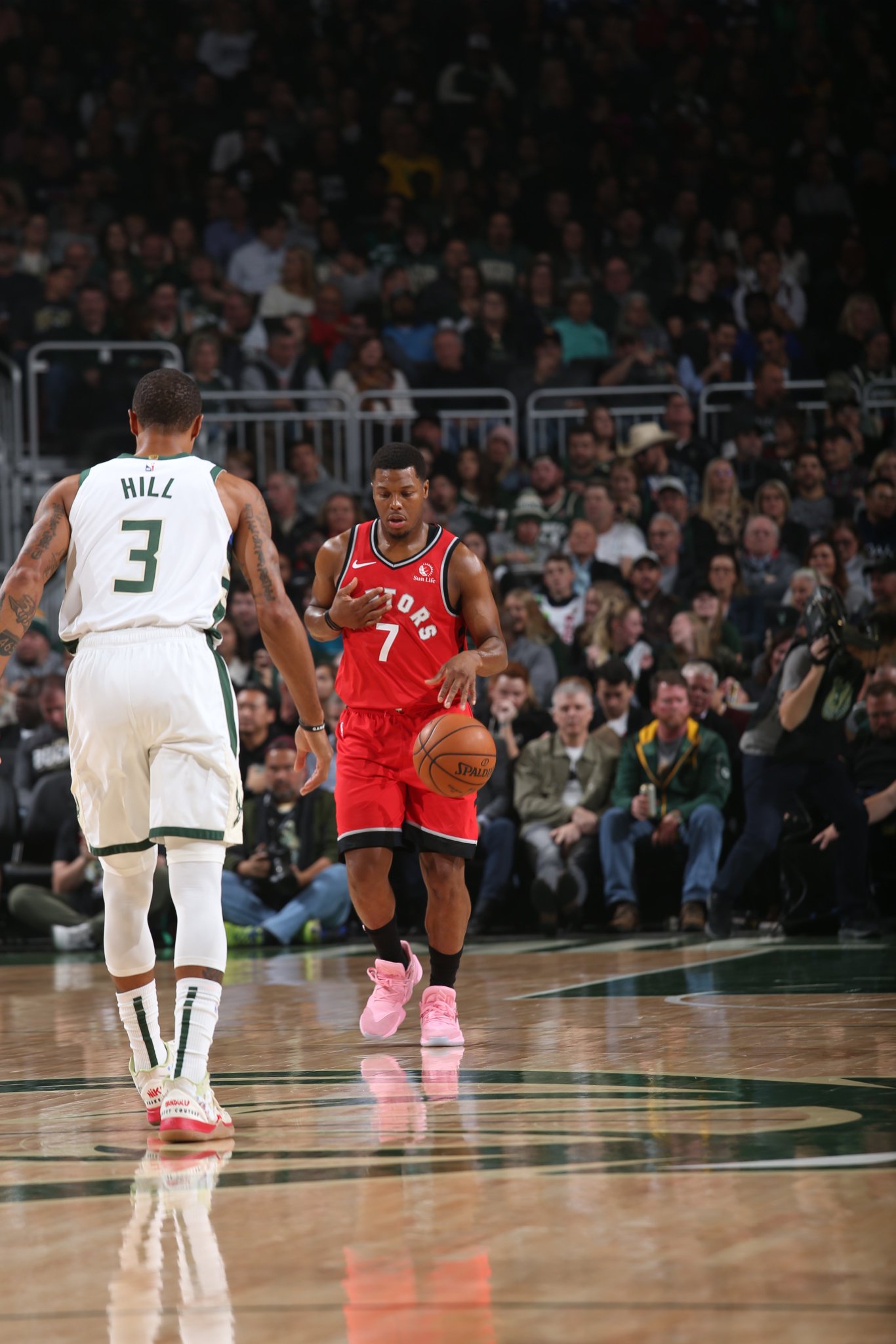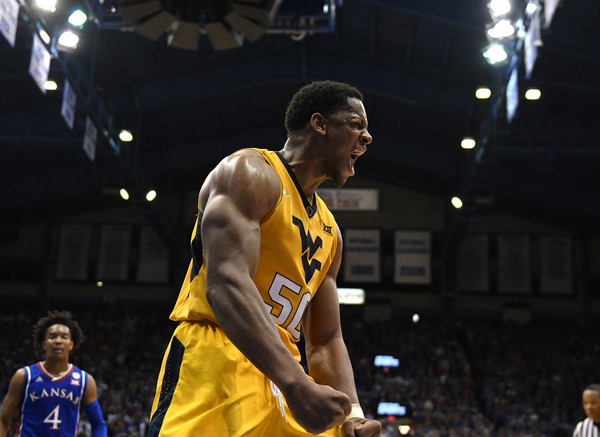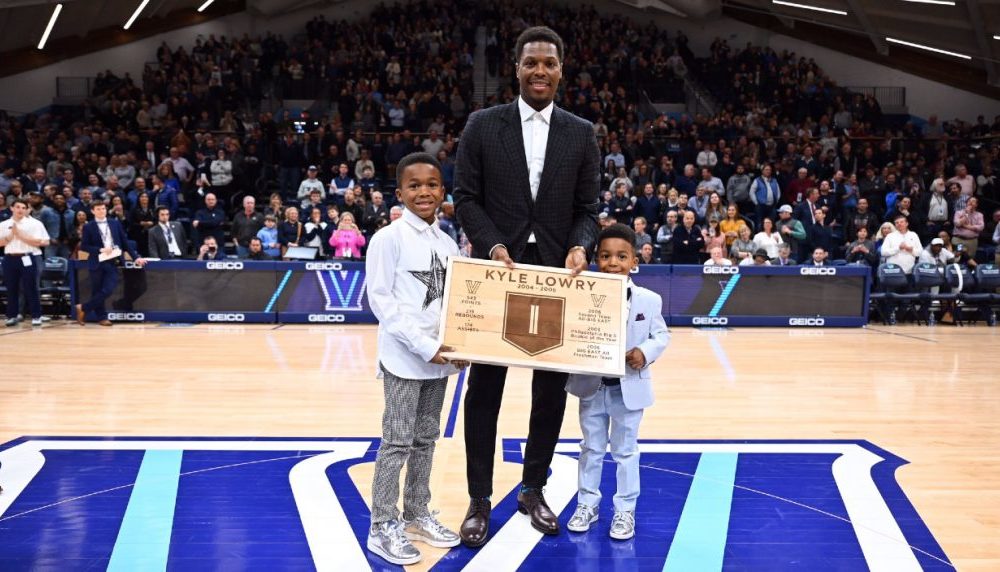The Milwaukee Bucks boast the best defense in the NBA, and it forces teams into some strange statistical anomalies. The Toronto Raptors, for example, attempted a franchise-record 52 triples against the Bucks on Tuesday night in a 108-97 loss. The game included some good, some bad, and some — you guessed it — ugly. Let’s dive into what will and will not work against the Bucks’ defense going forward.
First and most importantly, Toronto can’t be static. When teams play slowly against the Bucks, Milwaukee will eat their souls. It’s in most veterans’ nature to stabilize a sinking ship by slowing down, playing with calm, and running a basic set. Slow down and get a good shot? That’s death against the Bucks.
Milwaukee is the stingiest defense in the league in the half-court. When the Bucks control the pace of the game, it’s already over. Their bigs drop extremely low on all ball-screen actions, and they’re all good at keeping guards in front of them. The guards chase behind the ball-handlers, either to contest a pull-up shot or try to poke the ball away from behind as happened above. Most drives end up with the ball double-teamed. Many end up worse.
The Bucks are so long that they shrink the floor to a microscopic size, and they swarm and hack and bash and attack the ball at every chance. They play a wonderful combination of physical and smart, meaning they don’t actually commit a ton of fouls. To keep off balance a defense that wants to double-team everything, the offense needs to play with pace.
Matt Thomas did an excellent job of leveraging his shooting skill with pace when he was on the floor. He shot three-of-five from deep against the Bucks. But it was his ability to get open that was just as impressive. Here he cut with purpose, knowing that when the Bucks dropped Chris Boucher’s defender low into the paint, while Thomas’s own defender went behind him to get above the screen, Thomas would have an open jumper if he sprinted through the cut. This is how to take advantage of Milwaukee’s defensive scheme; any hesitation, and this jumper immediately becomes contested.
The threat of that jumper came in handy later. Here, Toronto freed Thomas early by using Fred VanVleet and Kyle Lowry to set separate screens to bump Thomas’s defender, meaning Khris Middleton trailed Thomas by a wide margin as Thomas jetted into the ball screen. Middleton was so far behind that he couldn’t get above the screen in time to rear-view contest, the Bucks’ preferred method of contesting a triple. And because Thomas had just displayed such shooting prowess, the Bucks’ primary paint defender panicked and jumped at the shot. A fatal error in a drop defense. Thomas thus found an easy pass to the rolling Boucher for a dunk.
Even when Thomas was well-defended during his off-ball cuts, just moving the ball in his direction and back again opened the floor for driving lanes that were usually closed. The very act of defending Thomas’ movement extended the floor and gave space back to his teammates within which to work.
All of those plays were created by quick, decisive actions. Sprinting through cuts, setting screens that made contact, and moving the ball from one threatening position quickly into another all created lanes that weren’t usually available. It wasn’t always Thomas creating those plays. Siakam and VanVleet combined in the two-man game, setting screens for each other, with two impressive half-court sets that resulted in a made jumper and free throws. Both plays came after timeouts, so Nurse did occasionally use dead balls to explicitly call for more pace and movement from his team.
Kyle Lowry understood the need for pace after the game: “[We needed to] screen a little bit more, maybe screen a little bit harder, play a little faster, a little bit uptempo.”
Beyond the general concept of pace, there’s another more specific approach an offense can use to take advantage of Milwaukee’s method of defending on-ball screens. When a defensive big sinks low into the paint and the guard jets behind the screen, there should always be a split second when the ball-handler has an open pull-up jumper.
To create that space, Toronto needed good contact on the screen from the big. Setting the ball screen a few feet above the arc, or even having the big shift his weight away from the arc at the moment of contact, provided that crucial extra moment that resulted in an open shot. When Ibaka couldn’t get a tight seal, Toronto couldn’t create an open pull-up shot. And Milwaukee’s guards are such experts at that rear-view contest that sometimes a shot that appeared open was actually a block waiting to happen.
“We handled [Milwaukee’s drop defense] really poorly,” said Nurse after the game. “We didn’t finish enough and didn’t make ’em pay from the perimeter. As always, you guys have always known I’ve always said that, if they’re gonna play that scheme, you gotta make them pay from the perimeter in bunches.”
When the threat of that block from behind materialized, it forced Toronto to turn away from the seemingly open pull-up triple. When Toronto did decide to venture inside the arc, they still faced thorny problems presented by the defense. Mid-range attempts are always difficult, but Milwaukee makes them especially tough because they roster so many long, big, and smart defenders. They recovered quickly. Any hesitation, and seemingly open shots turned into a turnover.
When the Raptors played without pause, however, making quick decisions, the mid-range could prove fruitful.
If pull-up jumpers aren’t working, and the mid-range isn’t always available, an offensive player might consider attacking the rim. But that’s what the Bucks want most of all. As soon as a guard ventures into the paint, that’s feasting time for Milwaukee’s defense. Teams shoot 9.7 percent less accurately from six feet or less against Milwaukee than expected, which is a gap larger than the next three best teams’ combined. The Bucks boast three of the best four rim protectors in the league in Giannis Antetokounmpo, Brook Lopez, and Robin Lopez. One of those three will always be on the floor. A drive against a set Milwaukee defense is suicide.
More fruitful for Toronto was a drive with no intention of scoring. Milwaukee still needed to respect the drive; if it didn’t respond by collapsing, then Toronto would have been able to score easily around the rim. So Toronto had to drive, force the defense to collapse, and then find open passing angles. Those angles were hard to come by, but they opened good shots.
Indeed, those paint touches were integral for Toronto. Nurse opined after the game that the team needed far more paint touches. The only possession that Nurse remembered with multiple paint touches was one of Toronto’s best offensive sets of the game. Here Siakam drove into the paint, drew help, and passed to the corner. Already this was a productive possession. As soon as Siakam saw Ibaka swing the ball to Anunoby, he recognized that his defender would be the only available helper on the coming Anunoby drive. So Siakam moon-walked backwards to the corner, where he knew an open triple waited. Siakam shot five-of-nine from deep in the game, one of the only bright spots on offense among Toronto’s starters.
In general, the more Toronto hit the paint, the better. It wasn’t always possible in the half-court, and Toronto multiple times turned the ball over in valiant but doomed attempts to reach the rim. Sometimes offensive possessions that hit most of the right notes — good and plentiful movement, forceful screens, paint touches — led to absolutely nothing. Them’s often the breaks against a defense as good as Milwaukee’s. But more often than not, paint touches led to better offense.
Toronto didn’t need to wait for ball screens and try to dribble around set defenders. It’s possible to simulate paint touches using the age-old weapons of pace and decisiveness.
Davis found that relocation triple by pushing the ball after a made Milwaukee basket. He simulated a fast-break opportunity simply by sprinting hard with the ball and counterattacking, even without numbers. While his veteran teammates like VanVleet often played too slow, dribbling right into Milwaukee’s hands, the rookie Davis was magnificent as a result of his youthful exuberance. He misfired on his attempts in the first half, which made his attack-first mentality appear wayward, but in the second half he was one of Toronto’s most effective offensive weapons. Simply by running hard, being athletic enough to attract multiple bodies in the paint, and shooting without hesitation from deep, Davis created effective offense while avoiding Toronto having to stagnate in the half-court. Toronto finished with 15 fast-break points on nine transition attempts; those are both low numbers, but they’re indicative of an efficient, if untapped, source of offense. Adding pace to the game at every opportunity would have helped, and Davis seemed to implicitly know that.
Ultimately, the Raptors need to shoot well to beat the Bucks. Milwaukee’s defense yields a boatload of triples — 52! — and Toronto’s players need to hit them. That message was all the rage after the game, with Nurse, Siakam, VanVleet, Lowry, and others repeating the company line that the team created good shots and simply missed them, which resulted in their losing the game. That’s true, of course, if overly simplistic.
That point misses the nuance that Toronto could have done much more to create better shots. Pace, side-to-side actions, more forceful cuts, more contact on screens, and more passing out of rim attempts all would have benefited Toronto greatly. When those things took place, especially in concert, that’s when Toronto found good looks. Of course, it’s valuable in itself that Toronto has areas in which to improve. If the Raptors had played an excellent offensive game and still been unable to score, that would have been a much more serious problem.
Before the game, both coaches were asked if there was anything they would hold in reserve in the game and keep in the holster in advance of a possible playoff series.
“Yeah, I mean, I think you talk about it and decide,” admitted Nick Nurse. “I would tend to probably try a few things tonight that may go sideways or may not work, that I may not try in a playoff game… I’ve got a couple ideas tonight that I think I want to look at that I don’t have any idea if they’re good or not. So I think I’ll throw them out there and maybe if it was a playoff game I wouldn’t. Since it’s not, hopefully I’ll give ’em a shot.”
Moving forward, the Raptors will surely learn and adapt and find new ways to solve old problems. A few film sessions, and Toronto will find creative solutions to the problems that Milwaukee’s defense presented. Milwaukee Head Coach Mike Budenholzer, on the other hand, answered that question about holding something in reserve differently:
“No, we’re not that tricky… They pretty much know what we’re gonna do.”
Toronto’s offense was middling against Milwaukee. But the Raptors have room to improve. Plans change. And Toronto — led by future Coach of the Year Nick Nurse — changes plans as well as any team in the league. The Bucks have not proven to have such an ability. And though the Bucks won this high-stakes and high-intensity regular season game in Toronto, it is the Raptors who are tricky and will adapt. The Bucks will continue to do what has worked, even when it stops working. That’s why Toronto should not be considered an underdog in the eventual playoff rematch between the two heavyweights.




